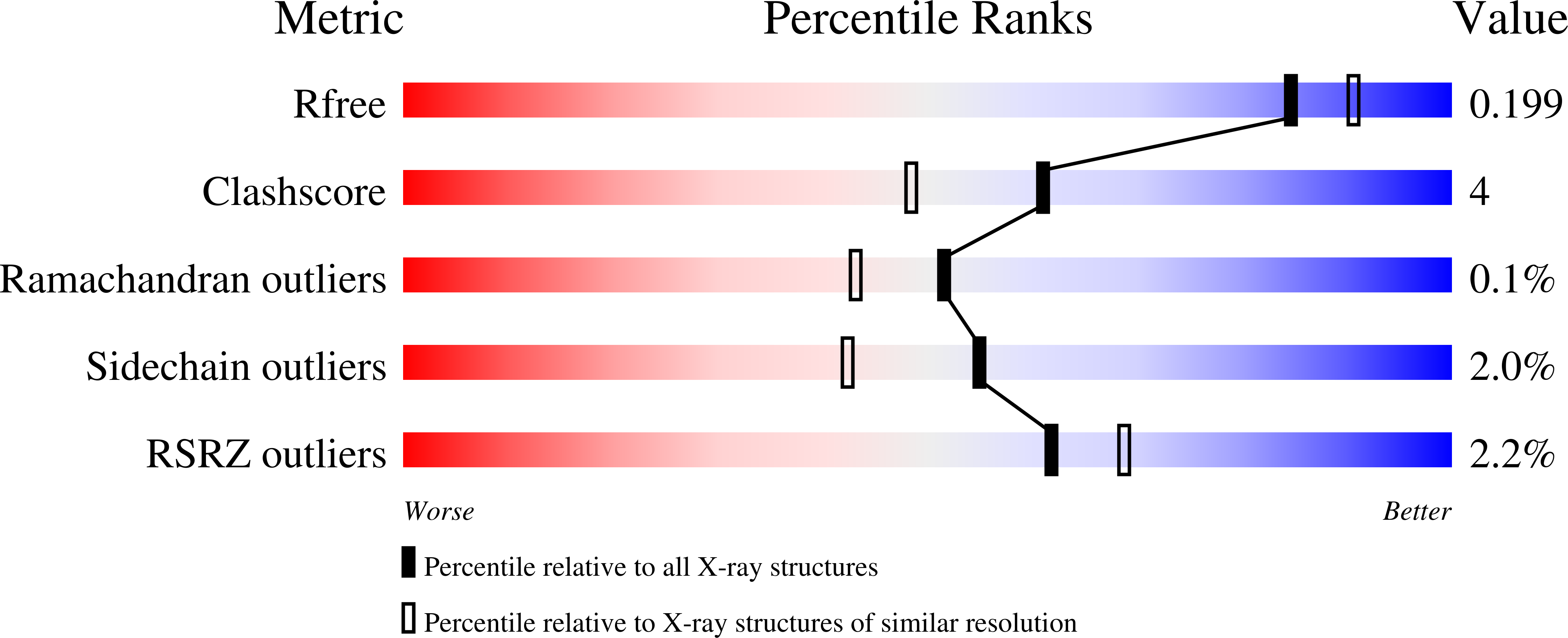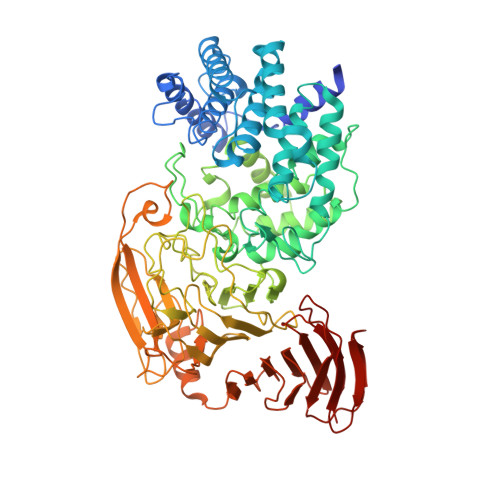Crystal Structures of a Family 8 Polysaccharide Lyase Reveal Open and Highly Occluded Substrate-Binding Cleft Conformations.
Elmabrouk, Z.H., Vincent, F., Zhang, M., Smith, N.L., Turkenburg, J.P., Charnock, S.J., Black, G.W., Taylor, E.J.(2011) Proteins 79: 965
- PubMed: 21287626
- DOI: https://doi.org/10.1002/prot.22938
- Primary Citation of Related Structures:
2WCO, 2WDA, 2X03 - PubMed Abstract:
Bacterial enzymatic degradation of glycosaminoglycans such as hyaluronan and chondroitin is facilitated by polysaccharide lyases. Family 8 polysaccharide lyase (PL8) enzymes contain at least two domains: one predominantly composed of α-helices, the α-domain, and another predominantly composed of β-sheets, the β-domain. Simulation flexibility analyses indicate that processive exolytic cleavage of hyaluronan, by PL8 hyaluronate lyases, is likely to involve an interdomain shift, resulting in the opening/closing of the substrate-binding cleft between the α- and β-domains, facilitating substrate translocation. Here, the Streptomyces coelicolor A3(2) PL8 enzyme was recombinantly expressed in and purified from Escherichia coli and biochemically characterized as a hyaluronate lyase. By using X-ray crystallography its structure was solved in complex with hyaluronan and chondroitin disaccharides. These findings show key catalytic interactions made by the different substrates, and on comparison with all other PL8 structures reveals that the substrate-binding cleft of the S. coelicolor enzyme is highly occluded. A third structure of the enzyme, harboring a mutation of the catalytic tyrosine, created via site-directed mutagenesis, interestingly revealed an interdomain shift that resulted in the opening of the substrate-binding cleft. These results add further support to the proposed processive mechanism of action of PL8 hyaluronate lyases and may indicate that the mechanism of action is likely to be universally used by PL8 hyaluronate lyases.
Organizational Affiliation:
Department of Biomedical Sciences, School of Life Sciences, Northumbria University, Newcastle upon Tyne NE1 8ST, United Kingdom.

















